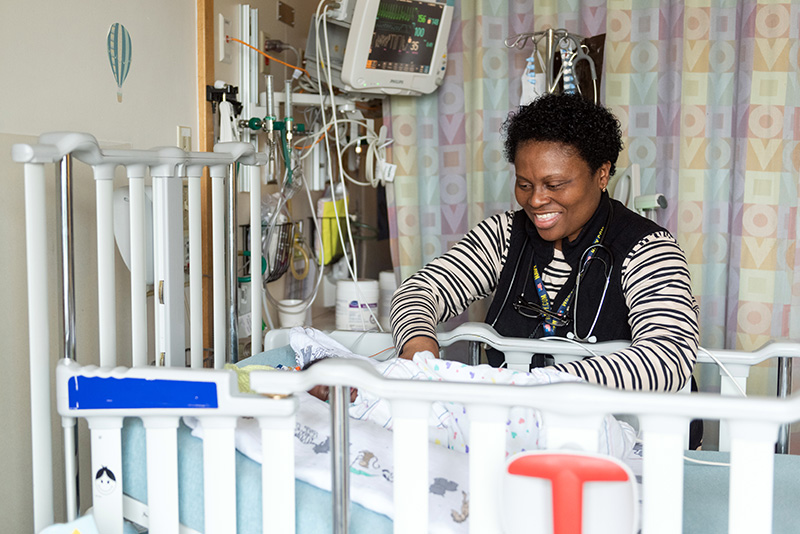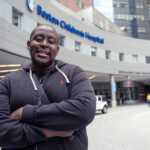Boston Children’s nurses: Setting the standard for innovation

As clinicians at Boston Children’s Hospital continue to pioneer new therapies for both kids and adults, nurses play a critical role in bringing those treatments to families. To make sure groundbreaking treatments like gene therapies are integrated into both nursing practice and patient care, Boston Children’s nurses have developed a series of processes.
When a new drug or treatment becomes available, our nurses lead by pulling all the intersecting pieces together to ensure the process flows and quality and safety remain at the forefront. This includes the design and delivery of:
- tailored clinical education programs
- patient and family education materials
- orders and standards of practice
- pathways and workflows
- new equipment
- physical space
Collaboration in action
The use of a gene therapy called tisagenlecleucel (brand name KYMRIAH) serves as a powerful example of this work. In 2018, Dana Farber/Boston Children’s Cancer and Blood Disorders Center became one of the first sites in the country certified to administer this drug to patients with acute lymphoblastic lymphoma. Nurses were at the table with physicians, scientists, pharmacists, and others to coordinate deployment of the therapy to our patients. Together, research and stem cell transplant nurses developed an intensive education program that helps frontline nurses perform multiple steps in the KYMRIAH process, including the collection of T cells, chemotherapy conditioning, infusion, and recovery.
As the development of life-changing therapies accelerates, Boston Children’s nurses are ready, says Colleen Dansereau, MSN, RN, CPN, director of clinical operations for the hospital’s Gene Therapy Program, and director of clinical research nursing at Dana Farber/Boston Children’s Cancer and Blood Disorders Center. “Our clinicians have learned to think in new, creative ways to shift the model of how medicine is practiced,” she says. “We’re ahead of the game because we already have an innovative program in place.”
Related Posts :
-

The dopamine reset: Restoring what’s missing in AADC deficiency
In March 2023, a young girl came to Boston Children’s Hospital unable to hold up her head — one striking symptom ...
-

“Observe. Be open.”: How Boston Children’s nurses are changing the future of global health
Ashley Birch, MSN, CPNP, a Boston Children’s pediatric nurse practitioner and Global Nursing fellow, didn’t expect a trash ...
-

A sickle cell first: Base editing, a new form of gene therapy, leaves Branden feeling ‘more than fine’
Though he doesn’t remember it, Branden Baptiste had his first sickle cell crisis at age 2. Through elementary school, he ...
-

A universal gene therapy for Diamond-Blackfan anemia is poised for clinical testing
Diamond-Blackfan anemia (DBA), first described at Boston Children’s Hospital in 1938, is a rare blood disorder in which the bone ...





